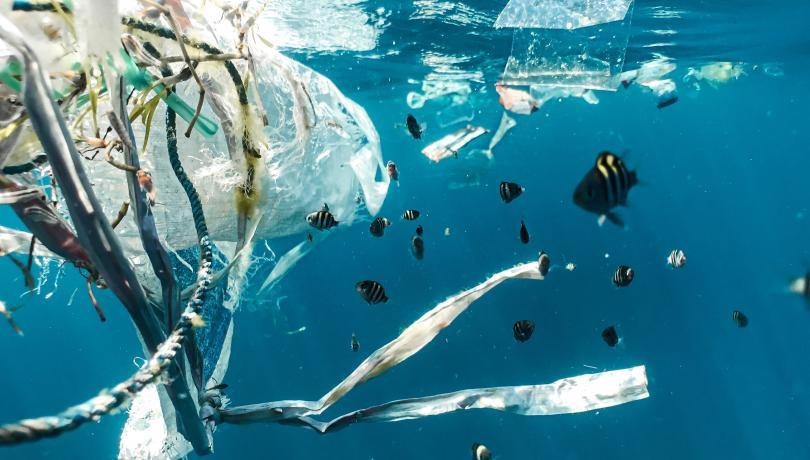Recent research headed by the Institut de Ciències del Mar (ICM-CSIC) and the University of Barcelona (UB) reveals how a great diversity of marine organisms attach themselves to plastics and are dragged along by marine currents.
 Plastics can act as dispersal vectors, as they provide substrates for some marine organisms to live on. Image Credit: Naja Bertolt Jensen (Unsplash).
Plastics can act as dispersal vectors, as they provide substrates for some marine organisms to live on. Image Credit: Naja Bertolt Jensen (Unsplash).
The study disclosed the fact that marine plastic pollution could add up to the initiation and transport of non-native species that fix to such particles of anthropogenic origin.
To perform the study, recently reported in the specialized journal Marine Pollution Bulletin, the scientific group determined several species fixed to plastic debris discovered both in water samples and on the beaches and seabed of the Catalan coast.
Especially, bryozoans, a group of generally small aquatic invertebrates, were the most diverse, and 15 species were determined. One of the species is not native, even though it had earlier been detected in other sectors of the Mediterranean: Arbopercula tenella.
It is important to undertake constant monitoring to confirm the establishment of this and other non-native species in natural or artificial habitats on the Catalan coast, as in the future they could become invasive and, consequently, contribute to the reduction of natural biodiversity, making ecosystems less resilient to change.
Blanca Figuerola, Study Author, Institut de Ciències del Mar
Figuerola is a member of the Medrecover Group and an expert in bryozoans.
Furthermore, scientists studied the various types of plastics found.
They may be relevant for distinct the communities attached to the plastic—what we call ‘biofouling’ - probably due to their chemical structure or surface properties.
Arnau Subías, Study Co-Author, Institut de Ciències del Mar
Figuerola is a member of the University of Barcelona’s Marine Geosciences GRC.
Effects on Plastic Trajectory
The study unravels that all bryozoan species found on plastics gathered from the seafloor are characteristic of shallower areas, and that majority of these plastics have lower densities compared to seawater.
This shows that the colonization of plastic surfaces by different organisms plays an important role in the sinking of plastic debris, so the identification of these organisms can provide us key information on the processes of plastic dispersion and transport in the oceans.
Blanca Figuerola, Study Author, Institut de Ciències del Mar
The accumulation of the low-density plastics would not happen in the sediments of the seabed if it were not for the added weight of organisms fixed to their surface.
The presence of different species attached to the plastics found on the beaches suggests that this deposition is not permanent and that these particles that have been deposited on the seabed may first be resuspended by currents, and then transported back to the coast due to the waves during storms.
Anna Sànchez, Lecturer, Department of Earth and Ocean Dynamics, University of Barcelona
Sànchez is also a member of the UB’s Marine Geosciences GRC.
This aids the concept that a considerable amount of plastic making its way to the ocean has been trapped temporarily in the coastal zone. However, it can also be transported to great depths through energetic hydrodynamic currents.
All things considered, the study reveals that plastics can serve as dispersal vectors, offering substrates that can be utilized as habitats by an extensive range of marine species and can hence ultimately change marine ecosystems.
For instance, in this case, the researchers discovered that small-spotted catshark (Scyliorhinus canicula) eggs were fixed to plastic. This is something that has never been seen earlier but could have a considerable effect on the geographic distribution and habitat of this species.
Journal Reference:
Subías-Baratau, A., et al. (2022) Marine biofouling organisms on beached, buoyant and benthic plastic debris in the Catalan Sea. Marine Pollution Bulletin. doi.org/10.1016/j.marpolbul.2022.113405.